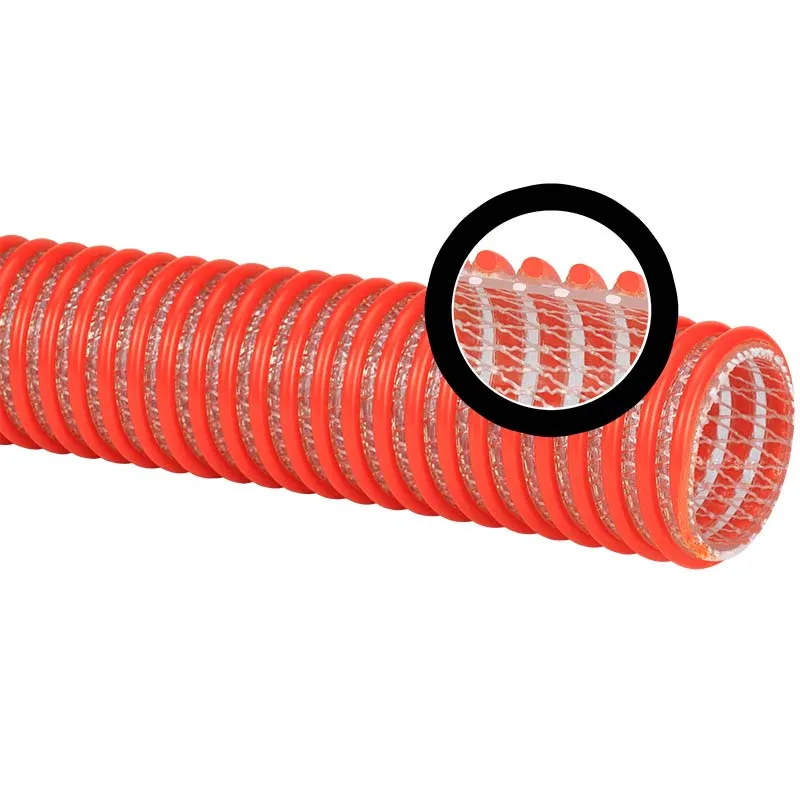Safety and Usage Guidelines for Oxygen and Acetylene Welding Hoses in Fabrication Projects
Understanding Oxy-Acetylene Hose Essential Equipment for Welding
Oxy-acetylene hoses play a crucial role in the world of welding, providing the necessary materials for heat generation in various welding processes. The combination of oxygen and acetylene gases creates a flame that reaches extremely high temperatures, allowing welders to fuse metal parts together effectively. In this article, we will explore the characteristics, types, safety, and maintenance of oxy-acetylene hoses, emphasizing their importance in welding applications.
Composition and Structure
Oxy-acetylene hoses are specially designed to transport oxygen and acetylene gas from the cylinders to the torch. Typically, they are color-coded for safety the oxygen hose is usually green, while the acetylene hose is often red. This differentiation helps prevent accidental mix-ups during welding operations.
These hoses are made from materials that can withstand high pressure and temperatures. The inner liners are typically crafted from durable rubber or synthetic materials that are resistant to the harsh chemicals and temperatures associated with the gases. Additionally, they are reinforced with fiber or wire braiding to enhance strength and flexibility, ensuring they can withstand the demands of industrial use.
Types of Hoses
There are primarily two types of oxy-acetylene hoses twin hoses and individual hoses.
1. Twin Hoses These consist of two hoses—one for oxygen and one for acetylene—combined into a single unit. This reduces the chances of tangling and makes handling easier in tight spaces.
2. Individual Hoses Some welders prefer using separate hoses for oxygen and acetylene. This allows for greater flexibility in maneuvering around a workspace but may require more management to avoid tangles.
Safety Considerations
When working with oxy-acetylene hoses, safety is of utmost importance. Here are several key safety guidelines to follow
oxy acetylene hose

- Regular Inspection Hoses should be regularly checked for signs of wear, damage, or leaks. Any visible cracks, abrasions, or deterioration can lead to hazardous situations and should be addressed immediately.
- Correct Handling Avoid kinks or twists in the hoses, as these can restrict gas flow and increase the risk of bursts. Always wind up hoses properly when not in use to prevent damage.
- Secure Connections Ensure that connections between hoses and tanks are tight to prevent leaks. Use appropriate fittings that match your hose type and size.
- Proper Storage When not in use, hoses should be stored in a cool, dry place away from direct sunlight, sharp objects, or heat sources. This extends their lifespan and maintains their integrity.
Maintenance Tips
To ensure the longevity and safe operation of oxy-acetylene hoses, consider the following maintenance tips
- Keep Them Clean Regularly clean the hoses to remove any dirt or debris. Use a damp cloth without solvents, as certain chemicals can degrade the material.
- Flush the Hoses Before using the torch, it’s wise to flush the hoses to eliminate any impurities or residue that may have built up.
- Replace Regularly Oxy-acetylene hoses have a finite lifespan, typically ranging from one to five years, depending on usage. It is essential to replace them according to the manufacturer's recommendations or whenever signs of wear appear.
Conclusion
Oxy-acetylene hoses are indispensable tools in the welding industry, facilitating the transportation of gases that create the high-temperature flame essential for various welding processes. Understanding their composition, types, safety concerns, and maintenance requirements is crucial for any welder. Adhering to safety practices not only protects the welder but also ensures high-quality results in welding projects. By treating these hoses with care and respect, we can continue to rely on them for reliable and effective welding solutions.
-
Top Quality Oxy Acetylene Hoses for Sale Fit for Welding DemandsNewsJul.28,2025
-
The Future of Pneumatic Air Tubes in IndustryNewsJul.28,2025
-
Superior and Reliable LPG Hose Pipe Solutions for Every NeedNewsJul.28,2025
-
Exceptionally Durable and Versatile Premium Braided PVC TubingNewsJul.28,2025
-
Best Adapters for Connecting Garden Hose to PVC Pipe ConnectionsNewsJul.28,2025
-
The Essential Role of LPG Hoses in Safe and Efficient Gas DistributionNewsJul.16,2025














